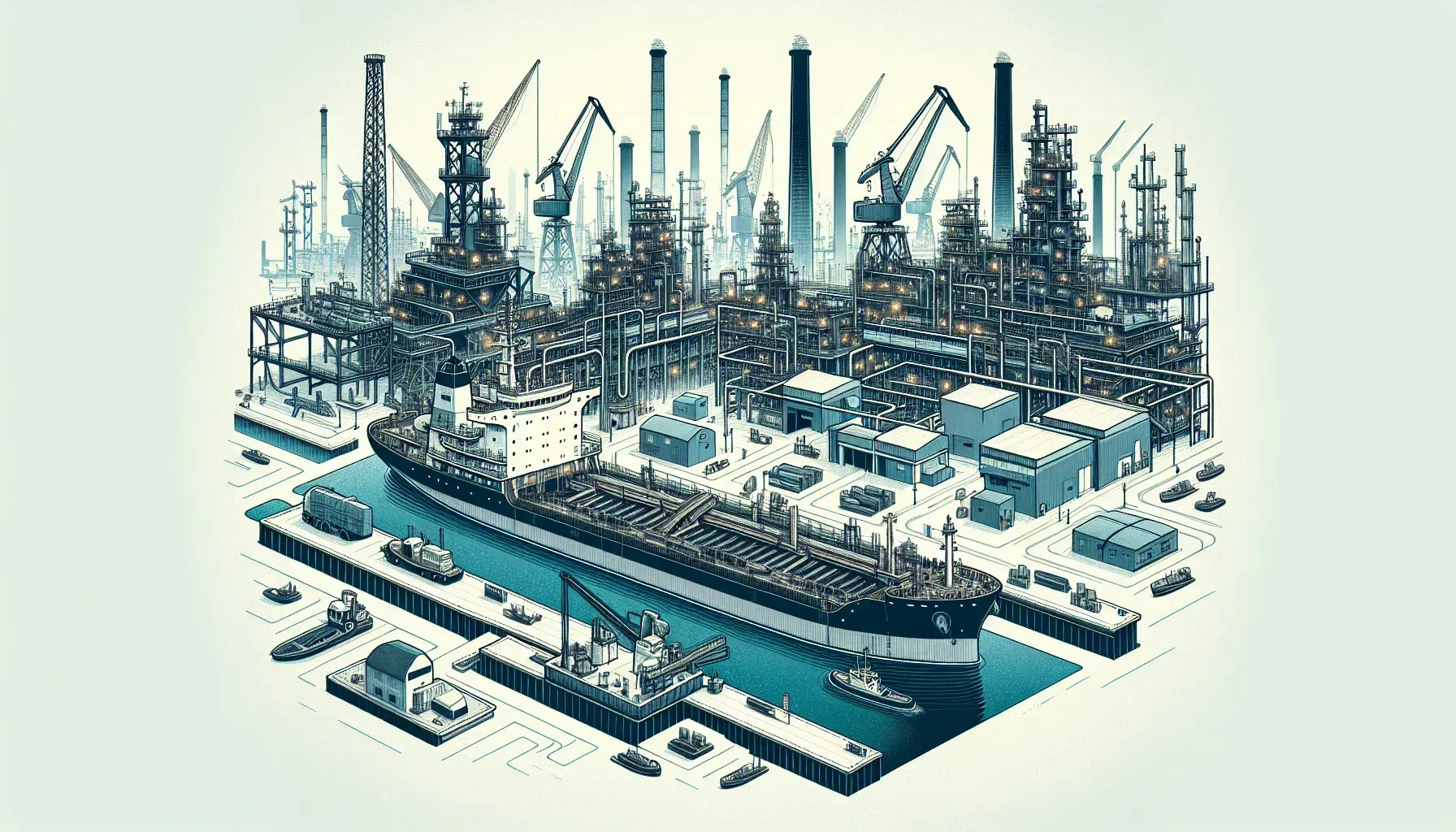History of Shipbuilding Evolution
Shipbuilding.io

Welcome to a fascinating exploration of the history of shipbuilding evolution. This journey will take us from the primitive rafts of the Stone Age to the high-tech, AI-driven vessels of the 21st century. We'll delve into the technological advancements, cultural shifts, and economic factors that have shaped this vital industry.
The Dawn of Maritime Endeavors
The history of shipbuilding begins with the dawn of civilization. Early humans, driven by the need to explore and expand, began to experiment with waterborne transportation. The first vessels were simple rafts, made from tying together logs or reeds. These primitive crafts served their purpose, allowing our ancestors to cross rivers and navigate along coastlines.
As societies grew and trade networks expanded, the demand for more sophisticated vessels increased. The Egyptians, renowned for their architectural prowess, were among the first to build larger, more complex ships. They used papyrus reeds to construct boats, employing a technique that involved bundling the reeds together and binding them with rope.
The Phoenicians, a seafaring people who lived in what is now Lebanon, were also pioneers in shipbuilding. They built sturdy, reliable ships that could withstand long voyages across the Mediterranean. These vessels were instrumental in establishing the Phoenician's extensive trade network, which extended from the Levant to the Iberian Peninsula.
The Age of Sail
The Age of Sail, spanning from the 16th to the mid-19th century, marked a significant period in the history of shipbuilding evolution. During this era, European nations developed large, ocean-going sailing ships, which played a crucial role in exploration, colonization, and trade.
The design of these ships evolved over time, driven by the need for speed, maneuverability, and cargo capacity. The Spanish galleon, a large, multi-decked sailing ship, was a notable example of this period. These vessels, with their high fore and aft castles and extensive rigging, became the backbone of Spain's overseas empire.
In the 18th century, the British Royal Navy introduced the ship-of-the-line, a type of naval warship. These vessels, characterized by their formidable firepower and solid construction, dominated naval warfare during this period. The HMS Victory, Admiral Nelson's flagship at the Battle of Trafalgar, is a famous example of a ship-of-the-line.
The Industrial Revolution and the Advent of Steam Power
The Industrial Revolution brought about dramatic changes in shipbuilding. The advent of steam power marked a significant shift from sail to engine-driven ships. The SS Great Britain, launched in 1843, was the world's first iron-hulled, screw-propelled steamship. This innovative vessel, designed by the brilliant engineer Isambard Kingdom Brunel, represented a major leap forward in maritime technology.
Steam power offered several advantages over sail. Steamships were not dependent on wind conditions, which made them more reliable and faster. They could also carry more cargo, which made them economically attractive. However, the transition to steam was not immediate. For several decades, hybrid ships, equipped with both sails and steam engines, were common.
The introduction of steel in shipbuilding, replacing iron and wood, was another significant development during this period. Steel was stronger and more durable than iron, and it allowed for the construction of larger, more robust ships. The SS City of New York, launched in 1888, was one of the first steel-hulled transatlantic liners.
The 20th Century: From Diesel Engines to Nuclear Power
The 20th century saw further advancements in shipbuilding technology. The introduction of diesel engines in the early 1900s marked another significant milestone. Diesel engines were more efficient and reliable than steam engines, and they quickly became the standard for commercial and naval vessels.
The mid-20th century brought about the advent of nuclear-powered ships. The USS Nautilus, launched in 1954, was the world's first nuclear-powered submarine. This revolutionary vessel could stay submerged for extended periods, a capability that transformed naval warfare.
The latter part of the 20th century also saw the rise of container shipping. The introduction of standardized shipping containers revolutionized the transport of goods, making it faster, cheaper, and more efficient. The Ideal X, a converted World War II tanker, was the first container ship, setting sail in 1956.
The 21st Century: High-Tech and Sustainable Shipbuilding
The 21st century has ushered in a new era of high-tech, sustainable shipbuilding. Advances in technology have led to the development of smart ships, equipped with advanced navigation systems, automated operations, and sophisticated data analytics capabilities. These vessels offer improved efficiency, safety, and environmental performance.
Sustainability has become a key focus in modern shipbuilding, driven by growing environmental concerns and stricter regulations. Shipbuilders are now exploring various green technologies, such as hybrid propulsion systems, solar power, and advanced hull designs to reduce fuel consumption and emissions.
One notable example of a sustainable ship is the MS Roald Amundsen, a hybrid-powered expedition cruise ship. Launched in 2019, this state-of-the-art vessel uses battery packs to support its engines, reducing CO2 emissions by 20%.
The Future of Shipbuilding
Looking ahead, the future of shipbuilding promises to be exciting and transformative. The industry is poised to embrace further technological advancements, such as artificial intelligence, robotics, and 3D printing. These technologies have the potential to revolutionize ship design, construction, and operation.
Autonomous ships, capable of operating without human intervention, are another area of active research and development. These vessels could offer significant benefits, including increased efficiency, reduced operating costs, and improved safety.
Despite these exciting prospects, the industry also faces challenges. The transition to a low-carbon future will require significant investment and innovation. The need to balance economic viability with environmental responsibility will be a key issue in the coming years.
Navigating the Waters of Shipbuilding Evolution
Our journey through the history of shipbuilding evolution has taken us from the humble beginnings of reed rafts to the high-tech, sustainable vessels of today. It's a testament to human ingenuity and the relentless pursuit of progress. As we look to the future, the industry stands at the cusp of a new era, poised to embrace the opportunities and challenges that lie ahead. The voyage continues, and it promises to be an exciting one.